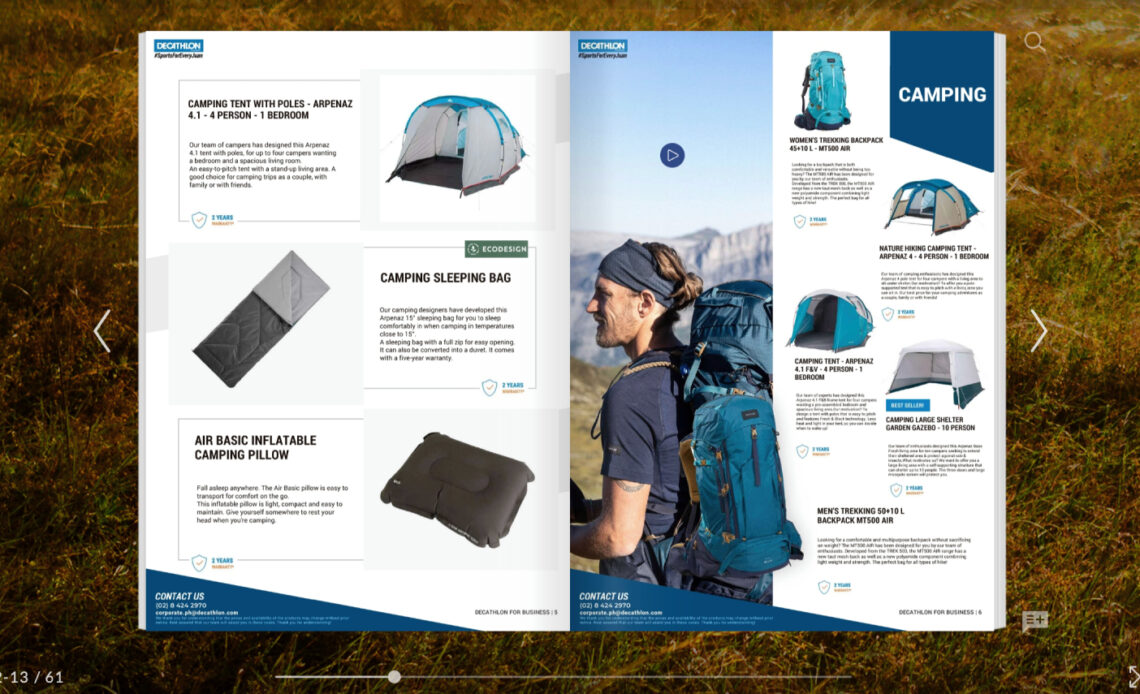
In recent years, the landscape of online shopping has transformed dramatically. The rise of e-commerce has introduced a new era of convenience and accessibility, allowing consumers to shop from the comfort of their homes.
However, as the digital marketplace becomes increasingly crowded, businesses must innovate to stand out and capture the attention of potential customers. One key area where significant advancements are being made is in digital product presentation. Let’s explore the future trends in this vital aspect of online shopping.
1. Interactive and Immersive Experiences
Interactive product catalogues are revolutionising the way consumers engage with online stores. These catalogues go beyond static images and descriptions, offering features like 360-degree views, zoom capabilities, and interactive elements. For instance, Publuu’s online catalogue maker allows businesses to craft dynamic and engaging catalogues that provide a more comprehensive view of their products. Customers can interact with the catalogue, exploring different angles and details, which enhances their understanding and interest in the product.
Immersive experiences are also gaining traction. Augmented Reality (AR) and Virtual Reality (VR) technologies enable customers to visualise products in their own environment. Imagine a customer shopping for furniture who can use AR to see how a new sofa would look in their living room. This level of immersion not only boosts confidence in the purchase decision but also reduces the likelihood of returns.
2. Personalisation and Customisation
Personalisation is becoming a cornerstone of digital product presentation. Modern consumers expect a shopping experience tailored to their preferences and behaviours. Advanced algorithms and artificial intelligence (AI) analyse customer data to offer personalised product recommendations, customised search results, and targeted marketing campaigns.
Moreover, customisation options within the product catalogue itself are becoming more prevalent. Customers appreciate the ability to personalise products to suit their tastes, such as choosing colours, materials, or features. This trend is particularly evident in industries like fashion, home décor, and technology, where individuality is highly valued.
3. High-Quality Visual Content
High-quality visual content is no longer a luxury but a necessity in digital product presentation. Consumers rely heavily on images and videos to make informed purchasing decisions. Therefore, businesses must invest in professional photography and videography to showcase their products in the best light.
In addition to traditional photos, many companies are incorporating lifestyle images and user-generated content into their product presentations. Lifestyle images show products in real-world settings, helping customers envision how they might use them. User-generated content, such as customer reviews with photos, adds authenticity and builds trust.
4. Seamless Mobile Experience
With the increasing use of smartphones for online shopping, ensuring a seamless mobile experience is crucial. Mobile-optimised websites and apps should offer the same level of detail and interactivity as their desktop counterparts. This includes responsive design, fast loading times, and intuitive navigation.
Progressive Web Apps (PWAs) are gaining popularity as they combine the best features of websites and mobile apps. PWAs provide a fast, reliable, and engaging user experience, even in areas with poor internet connectivity. They are easily accessible through a browser, eliminating the need for users to download an app.
5. Advanced Search and Filtering Options
Advanced search and filtering options are essential for helping customers find what they need quickly and efficiently. Faceted search, which allows users to filter products by multiple attributes (such as size, colour, price, and brand), enhances the shopping experience by narrowing down choices to the most relevant options.
Voice search is another emerging trend. As voice-activated assistants like Siri, Alexa, and Google Assistant become more integrated into everyday life, consumers are increasingly using voice commands to search for products. Optimising product catalogues for voice search can give businesses a competitive edge.
6. Sustainability and Ethical Considerations
Sustainability and ethical considerations are becoming more important to consumers, influencing their purchasing decisions. Digital product presentations can highlight a company’s commitment to sustainability by showcasing eco-friendly products, transparent supply chains, and ethical business practices.
Interactive elements within the catalogue can educate consumers about the environmental impact of their purchases. For example, a product page might include information about the materials used, the manufacturing process, and the carbon footprint. By promoting sustainable choices, businesses can attract environmentally conscious customers and build brand loyalty.
7. Social Commerce Integration
Social commerce, the merging of social media and e-commerce, is a growing trend. Platforms like Instagram, Facebook, and Pinterest are integrating shopping features that allow users to purchase products directly from their social feeds. This seamless integration blurs the lines between browsing and buying, making it easier for consumers to make impulsive purchases.
Shoppable posts, stories, and live streams are effective ways to engage customers and drive sales. Businesses can leverage the power of social proof by showcasing user-generated content and influencer endorsements within their digital product presentations.
8. Enhanced Customer Support
Enhanced customer support options are essential for addressing questions and concerns promptly. Live chat features, chatbots, and AI-driven support systems provide instant assistance, helping customers make informed decisions. These tools can guide users through the product catalogue, answer queries about specifications, and offer recommendations based on their needs.
Video consultations are also becoming popular, especially for high-involvement purchases like electronics, fashion, and home improvement. Customers can schedule virtual appointments with experts who can demonstrate products and provide personalised advice.
Conclusion
The future of online shopping lies in creating engaging, personalised, and immersive experiences for consumers. As technology continues to evolve, businesses must stay ahead of the curve by adopting these trends in digital product presentation. Interactive catalogues, personalisation, high-quality visuals, seamless mobile experiences, advanced search options, sustainability, social commerce integration, and enhanced customer support are all key components of a successful online shopping strategy.
By embracing these innovations, businesses can not only meet the changing expectations of consumers but also differentiate themselves in a competitive market. The future of online shopping is bright, and those who invest in advanced digital product presentation will be well-positioned to thrive in this dynamic landscape.
